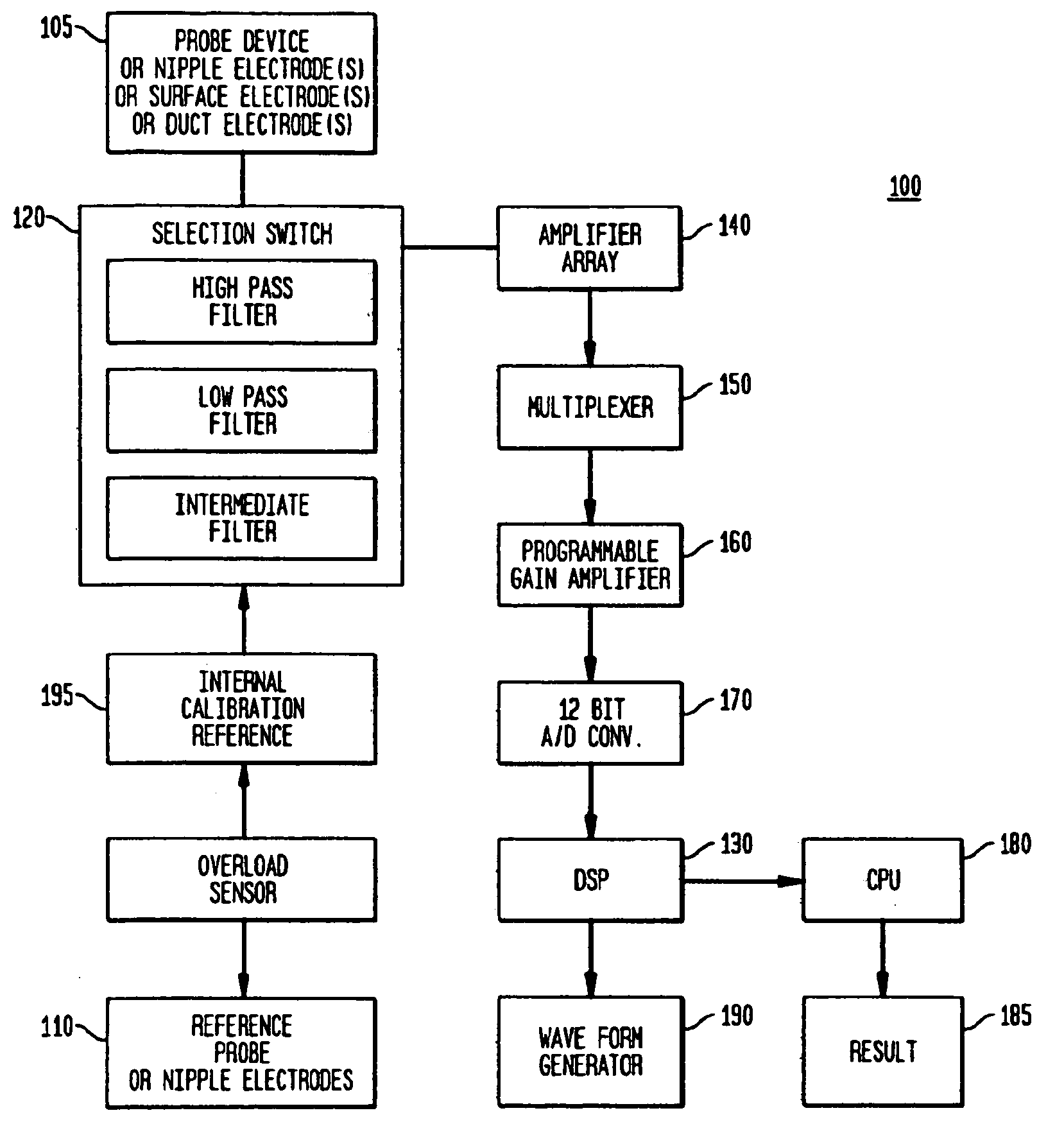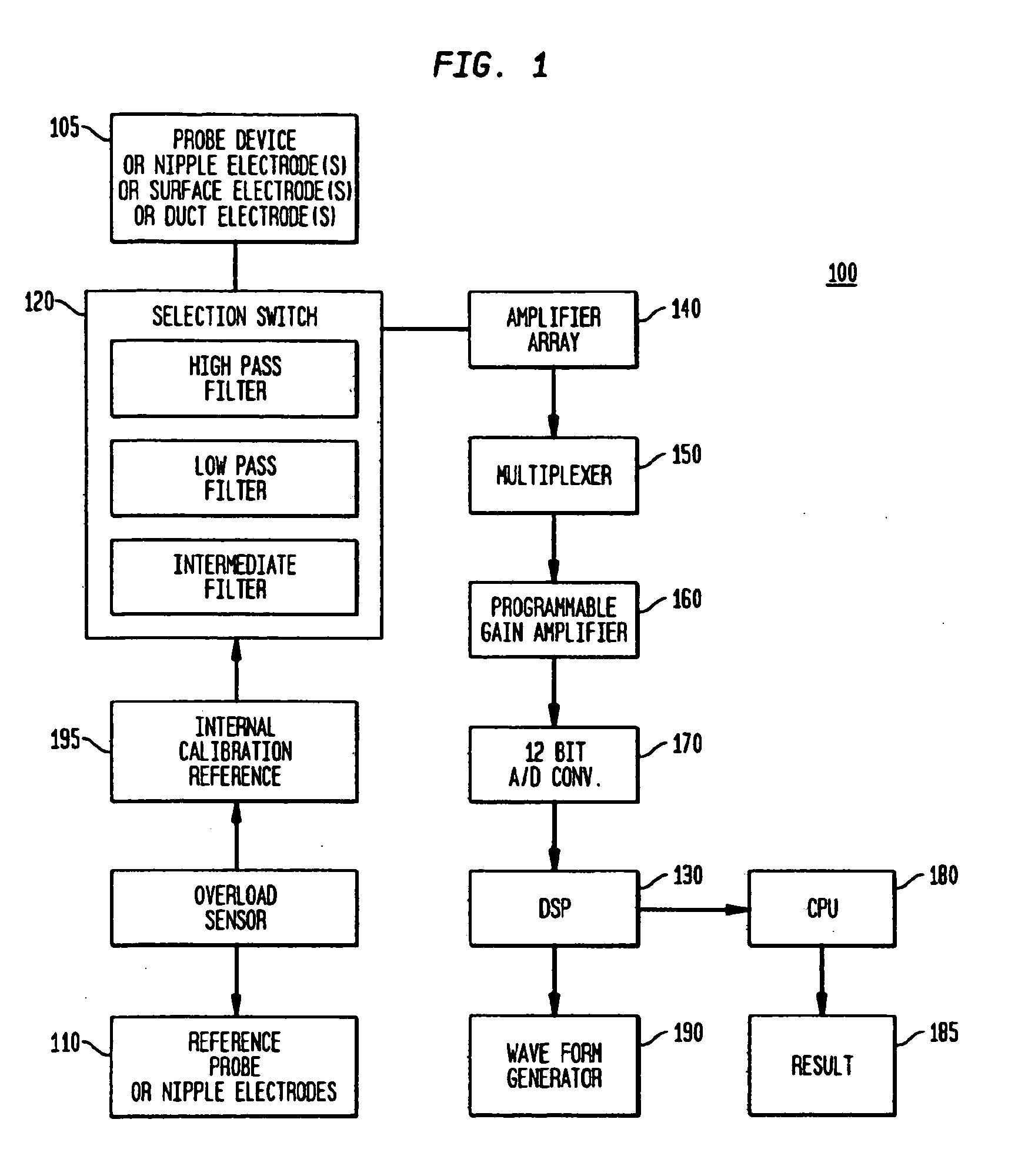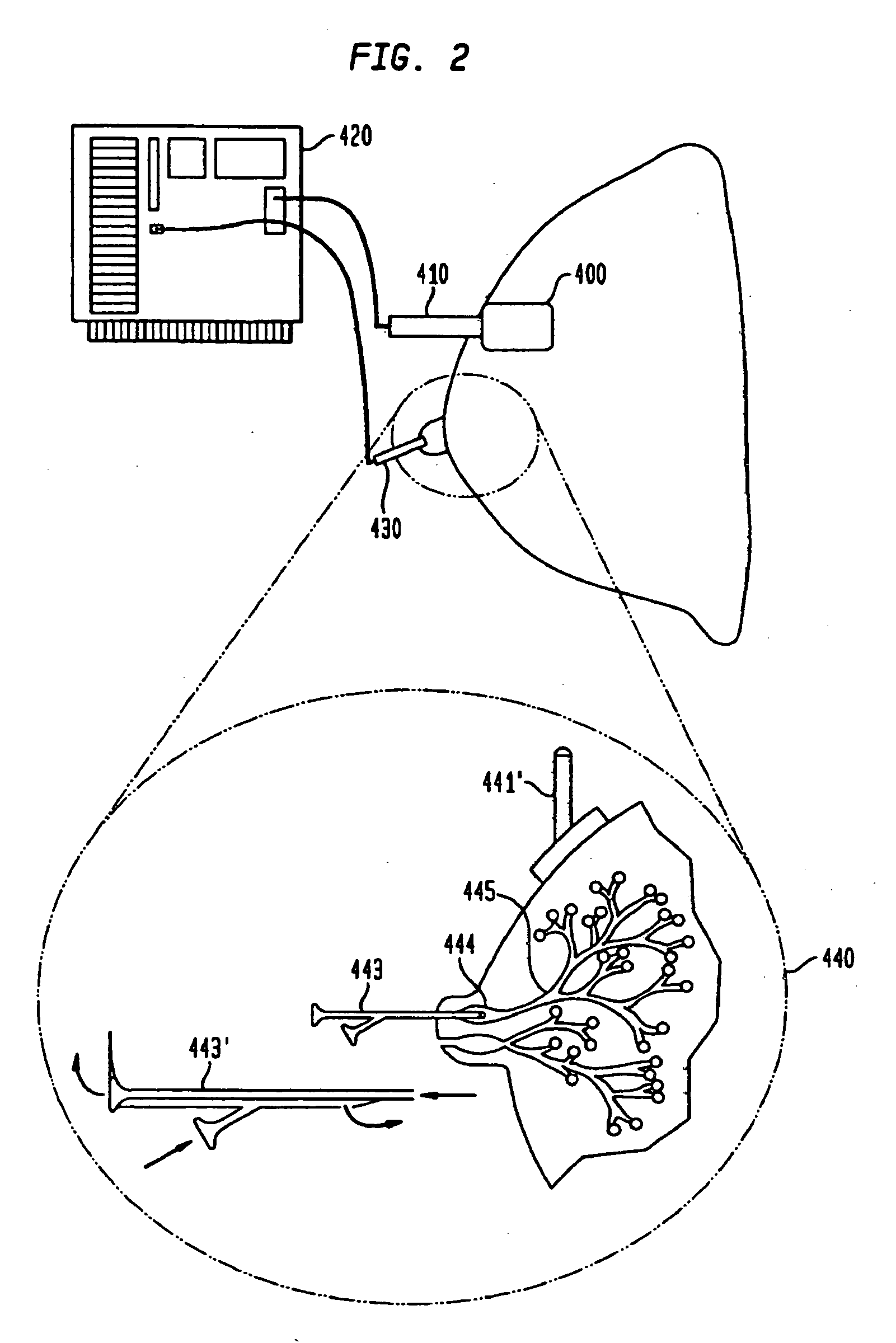Electrical bioimpedance analysis as a biomarker of breast density and/or breast cancer risk
a biomarker and breast density technology, applied in the field of breast density and/or breast cancer risk, can solve the problems of high mortality rate, difficult tissue detection, and inability to detect the presence of proliferative cells
- Summary
- Abstract
- Description
- Claims
- Application Information
AI Technical Summary
Benefits of technology
Problems solved by technology
Method used
Image
Examples
Embodiment Construction
[0108]For purposes of the present invention the following terms have the indicated meanings:
[0109]Sub-epithelial impedance, referred to herein as Zsub, means the impedance of the breast tissue that is underneath (sub) or beyond the ducts of the breast, i.e., the stroma or mesenchymal tissue of the breast (including fat, fibroglandular tissue, etc.). At high frequencies, such as about 50 KHz to about 60 KHz and higher, the epithelia (ducts and ductal-alveolar units of the breast) and overlying skin of the breast contribute very little to the total measured impedance, so the remainder is the sub-epithelial impedance (Zsub). Technically, Zsub is defined as the impedance at infinite frequency or the highest frequency tested, provided that the frequency is sufficiently high that the dielectric properties of the epithelial breast cells and the overlying skin break down and thus do not cause the test result to differ significantly from the true value at infinite frequency or at a significa...
PUM
 Login to View More
Login to View More Abstract
Description
Claims
Application Information
 Login to View More
Login to View More - R&D
- Intellectual Property
- Life Sciences
- Materials
- Tech Scout
- Unparalleled Data Quality
- Higher Quality Content
- 60% Fewer Hallucinations
Browse by: Latest US Patents, China's latest patents, Technical Efficacy Thesaurus, Application Domain, Technology Topic, Popular Technical Reports.
© 2025 PatSnap. All rights reserved.Legal|Privacy policy|Modern Slavery Act Transparency Statement|Sitemap|About US| Contact US: help@patsnap.com



